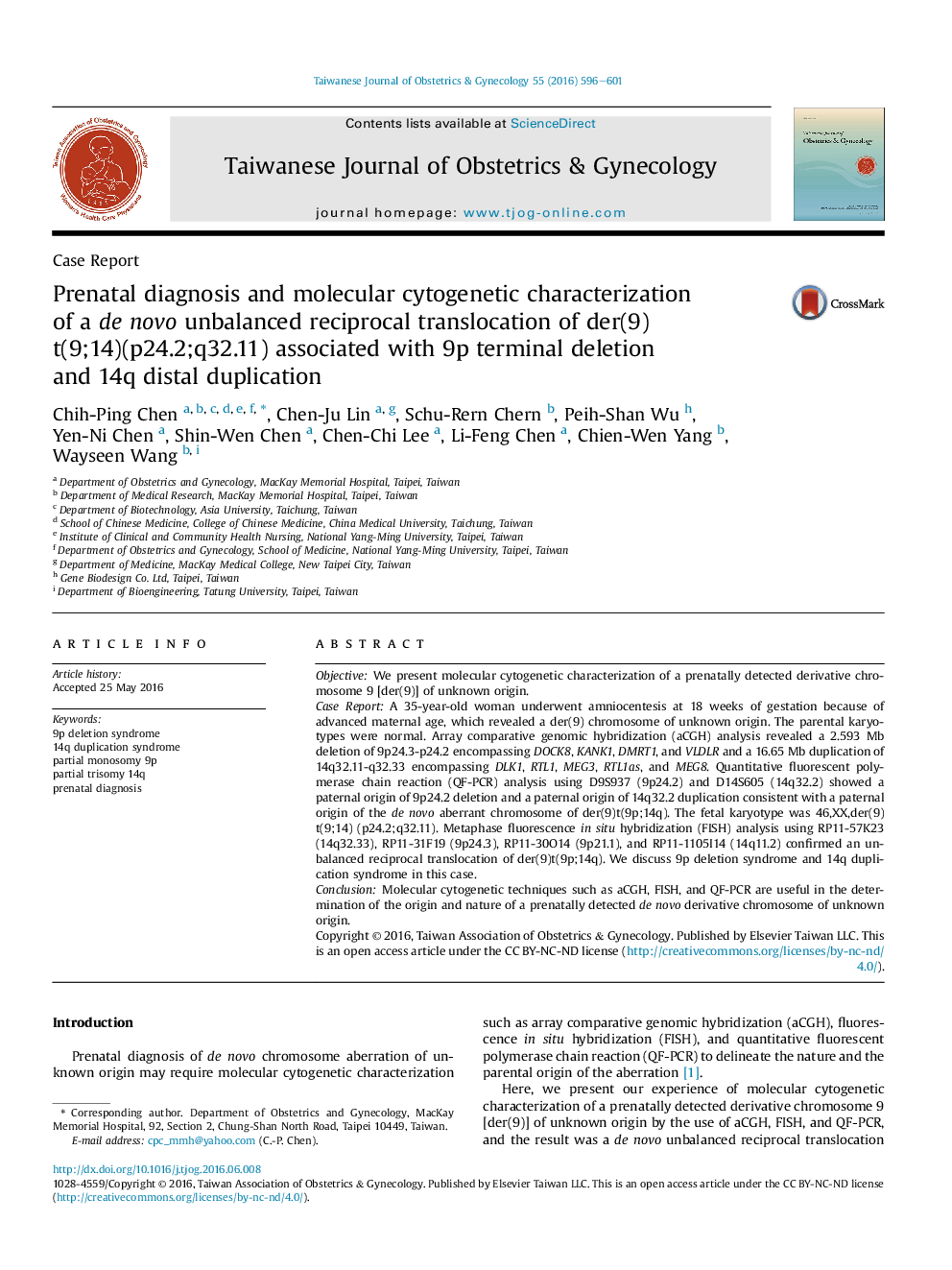| Article ID | Journal | Published Year | Pages | File Type |
|---|---|---|---|---|
| 3974897 | Taiwanese Journal of Obstetrics and Gynecology | 2016 | 6 Pages |
ObjectiveWe present molecular cytogenetic characterization of a prenatally detected derivative chromosome 9 [der(9)] of unknown origin.Case ReportA 35-year-old woman underwent amniocentesis at 18 weeks of gestation because of advanced maternal age, which revealed a der(9) chromosome of unknown origin. The parental karyotypes were normal. Array comparative genomic hybridization (aCGH) analysis revealed a 2.593 Mb deletion of 9p24.3-p24.2 encompassing DOCK8, KANK1, DMRT1, and VLDLR and a 16.65 Mb duplication of 14q32.11-q32.33 encompassing DLK1, RTL1, MEG3, RTL1as, and MEG8. Quantitative fluorescent polymerase chain reaction (QF-PCR) analysis using D9S937 (9p24.2) and D14S605 (14q32.2) showed a paternal origin of 9p24.2 deletion and a paternal origin of 14q32.2 duplication consistent with a paternal origin of the de novo aberrant chromosome of der(9)t(9p;14q). The fetal karyotype was 46,XX,der(9)t(9;14) (p24.2;q32.11). Metaphase fluorescence in situ hybridization (FISH) analysis using RP11-57K23 (14q32.33), RP11-31F19 (9p24.3), RP11-30O14 (9p21.1), and RP11-1105I14 (14q11.2) confirmed an unbalanced reciprocal translocation of der(9)t(9p;14q). We discuss 9p deletion syndrome and 14q duplication syndrome in this case.ConclusionMolecular cytogenetic techniques such as aCGH, FISH, and QF-PCR are useful in the determination of the origin and nature of a prenatally detected de novo derivative chromosome of unknown origin.
